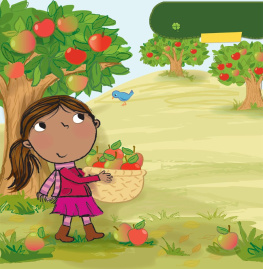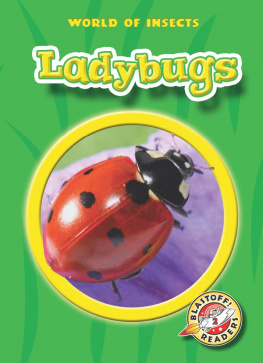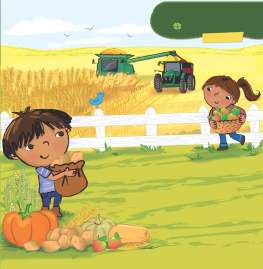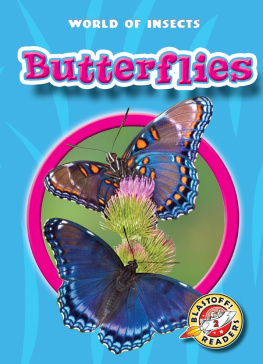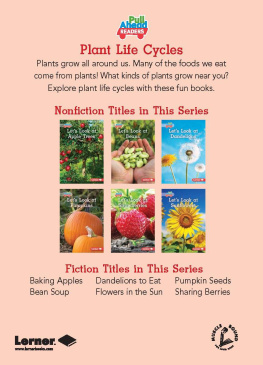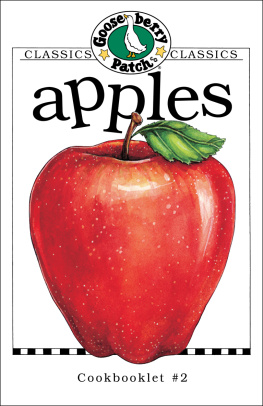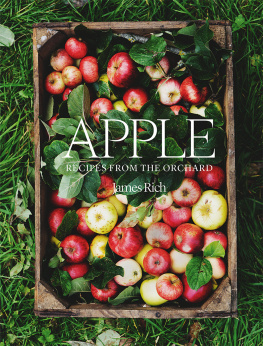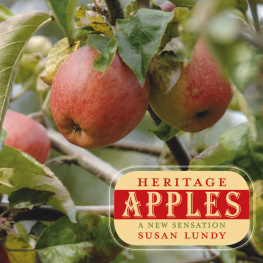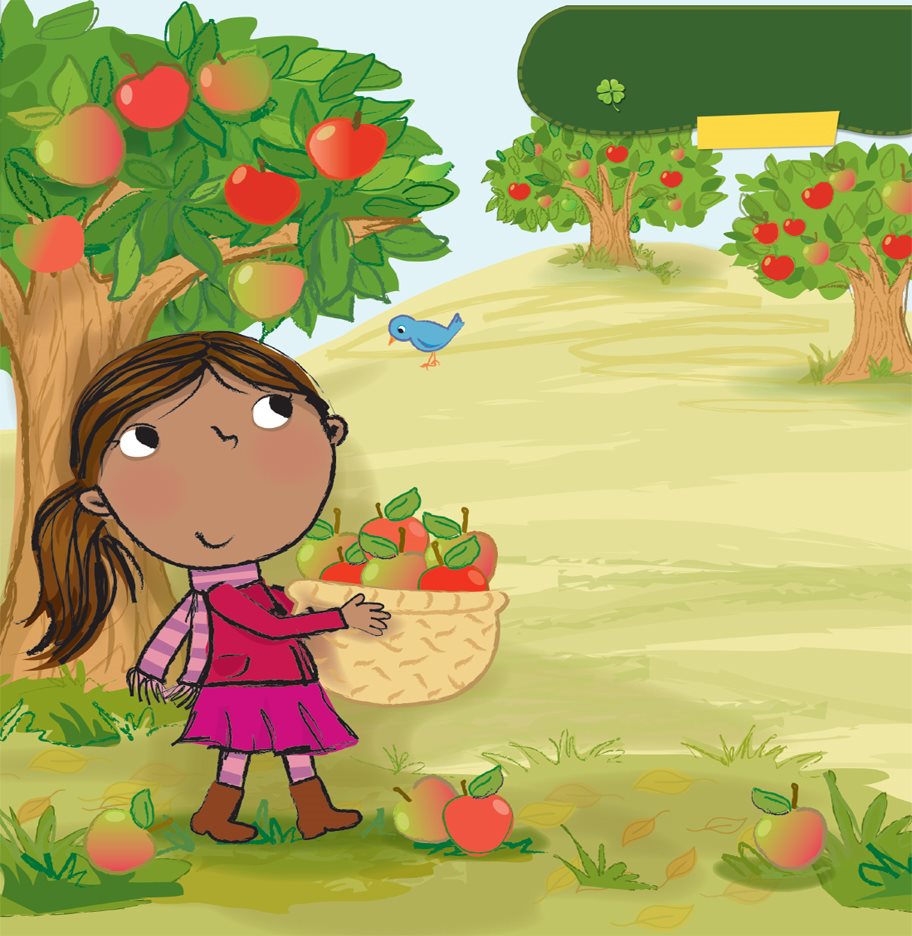Cl verleaf books
Falls Here!
Fall
Apples
Crisp and Juicy
Martha E. H. Rustad
Illustrated by
Amanda Enright
For my parents M. E. H. R.
For Lily and Oliver A. E.
Text and illustrations copyright 2012 by Lerner Publishing
Group, Inc.
All rights reserved. International copyright secured. No part
of this book may be reproduced, stored in a retrieval system,
or transmitted in any form or by any meanselectronic,
mechanical, photocopying, recording, or otherwisewithout the
prior written permission of Lerner Publishing Group, Inc., except
for the inclusion of brief quotations in an acknowledged review.
Millbrook Press
A division of Lerner Publishing Group, Inc.
241 First Avenue North
Minneapolis, MN 55401 U.S.A.
Website address: www.lernerbooks.com
Main body text set in Slappy Inline 18/28.
Typeface provided by T26.
Library of Congress Cataloging-in-Publication Data
Rustad, Martha E. H. (Martha Elizabeth Hillman), 1975
Fall apples : crisp and juicy / by Martha E. H. Rustad ;
illustrated by Amanda Enright.
p. cm.
Includes index.
ISBN: 9780761350644 (lib. bdg. : alk. paper)
1. ApplesJuvenile literature. 2. ApplesHarvesting
Juvenile literature. 3. Cooking (Apples)Juvenile literature.
I. Enright, Amanda, ill. II. Title.
SB363.R87 2012
634.11dc22 2010051510
Manufactured in the United States of Americav
1 BP 7/15/11

TABLE OF CONTENTS
Chapter One
Apples in Fall
Look! Colorful leaves blow in the breeze.
The air feels cooler. It is fall.
Fall is a good time to visit an
apple orchard. Fall is a good
time to pick apples.
Orchards around the
world grow about fifty
kinds of apples.
Crunch!
I bite through the red
skin. The crisp, white flesh
tastes sweet. Juice drips
down my chin.
Surprise! Tiny dark seeds hide inside the core.
Most ripe apples
have red skin.
Some have yellow
or green skin.
Chapter Two
How Apples Grow
Plop! An apple seed falls
into the soil. Roots grow down.
A stem grows up.
Drip! Just enough rain
helps the seed become
a sprout.
Just enough sunlight
helps the sprout become
a tree.
Stem
Roots
When an apple
seed grows into a tree, its
apples are different from the
apple that made the seed. To
grow a certain kind of apple,
orchards attach a stem from
one tree to the roots of another.
Then they grow together.
Green leaves bud and spread.
Leaves soak up warm sunlight.
Sunlight becomes food for the growing tree.
Some trees start to
grow apples three to
five years after they
are planted.
S n i f f!
I smell the
sweet flowers.
In the spring, white
and pink apple
blossoms bloom.
Buzz! Bees drink nectar from apple flowers.
Pollen from the flowers sticks to their bodies.
Bees spread pollen from tree to tree.
Apple blossoms
need pollen from another
kind of apple tree to grow
fruit. Bees and other insects
spread pollen from the flowers
on one tree to the flowers on
another tree.
Pollen from another tree
fertilizes the flowers.
Then their petals fall.
Tiny green fruitlets form.
During the summer, fruitlets
grow into big apples.
Pickers harvest apples in fall. Ripe apples pile up.
Apple pickers are
gentle. They twist off only the
apple and stem. No apple will
grow there the next year if they
pull off the spur that connects
the stem to the tree.
Chapter Three
Using Apples
Lets visit the orchards kitchen. Bakers
peel, core, and cut apples to make pies.
Ding!
The pie is done.
It smells like cinnamon and baked apples.
My teeth crush the crisp crust.
About half of the U.S.
apple crop is eaten fresh.
People make the rest into
jelly, cider, juice, vinegar,
apple butter, applesauce,
or pie filling.
Lets make apple cider.
About forty apples
are pressed to make
gallon (3.8 liters) of
apple cider.
Whir! The grinder turns. It smashes
the apples into pulp.
Squish! The press squeezes the apple
pulp. Cider trickles out.
We drink the cider.
It looks cloudier
than apple juice.
It tastes sweet and tart. Yum!

